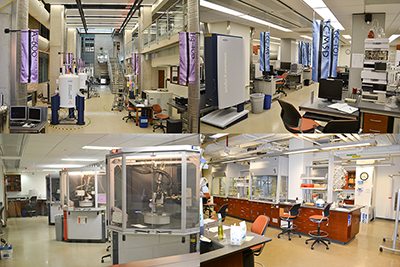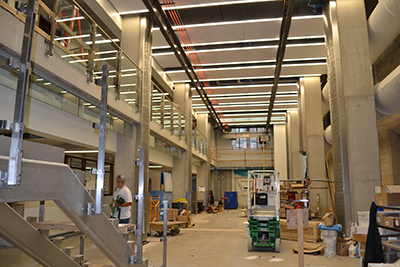About IMSERC
Mission

The Northwestern University (NU) Integrated Molecular Structure Education and Research Center (IMSERC) was established to educate NU students and researchers to be scientific leaders, support world-class research, and provide access to and education for students on the use of a variety of analytical instrumentation and methodologies. IMSERC mission is to support research throughout all of Northwestern and beyond in the areas of (but not limited to) molecular characterization, drug discovery, materials science, environmental research, translational medical research, nanotechnology, chemical biology, catalysis, pharmacokinetics, clinical research, and molecular imaging. To accomplish this, IMSERC is a one-stop-shop, open-access facility that provides and maintains a suite of state-of-the-art analytical instrumentation, including single crystal and powder X-ray diffractometers, Nuclear magnetic resonance spectrometers (solid state, cryo, and liquid with multidimensional experiments available), gas and liquid chromatographs with UV and mass spectrometric detection (high-resolution accurate mass and nominal mass instruments capable of anything from validated quantitative methodology to untargeted screening), and physical characterization instrumentation (elemental analyses, thermal analyses, size exclusion chromatography of polymers).
History
The Integrated Molecular Structure Education and Research Center (IMSERC) began its existence as the Analytical Services Laboratory (ASL) at Northwestern University under the direction of Prof. Claude Lucchesi in 1968 as one of the first shared analytical instrumentation labs at a US academic institution. It was renamed to IMSERC in 2008 after adding significant new capabilities. With the state-of-the-art instrumentations, IMSERC provides rapid access to Crystallography, Mass spectrometry, NMR spectroscopy, and many other commonly used analytical techniques to students and research groups at Northwestern University and the greater Chicago Area. IMSERC is a proud member of the NSF funded Soft and Hybrid Nanotechnology Experimental Resource (SHyNE).

IMSERC currently has eight dedicated, full-time staff with combined experience of over 160 years in their respective fields. The staff are here to assist researchers in all aspects of experimental design, data collection, interpretation, analysis, helping prepare research proposals and publications. The staff trains undergraduate and graduate students, and post-doctoral, researchers to have open access to all instruments. On average, 500 training sessions are conducted each year. Approximately 70,000 experiments are performed in IMSERC. IMSERC maintains 9 mass spectrometers, 6 NMR spectrometers, 6 X-Ray diffractometers, and several other instruments for physical and optical characterization. Most users at NU run their experiments themselves after a formal training by IMSERC staff. In addition, IMSERC staff provides analytical service to both internal and external users on a fee for service basis.
IMSERC logo

Our IMSERC logo was designed by Chemistry major Torin Dupper. The logo features a spectrum peak and a shining beam of light representing the data we collect and the insights we provide for Northwestern Research.
Fun Facts
- Center founded in 1968
- Total NMR magnetic field in 2013: 101T / 3900 MHz / 25,000,000x Earth’s magnetic field
- Most selective instrument? You decide
- Mass spectrometry can detect a mass difference of 10-29 g
- X-Ray crystallography can accurately measure atom spacings to 10-13 meters
- ICP MS can determine metal concentration to 1 part in a billion (equivalent to picking out a single person from the Earth’s population)